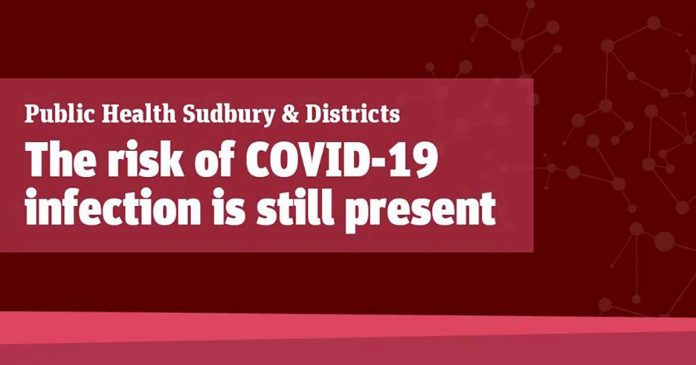AUNDECK OMNI KANING – Today, May 5, is the National Day of Awareness for missing and murdered Indigenous women and girls (MMIWG) across North America, and Noojmowin Teg Health Centre has posted a display to mark the solemn occasion outside its Aundeck Omni Kaning headquarters, which will stand for the remainder of sexual assault awareness month through the end of May.
“I think it’s really important, of course, that everybody recognize that these issues are not far removed from us. It’s happening in our home communities and we certainly feel the impact of those things,” said Delaney Campbell, interim mental health and addictions manager at Noojmowin Teg, and a counsellor/navigator with its sexual and domestic violence services (SDVS) program.
The SDVS and marketing teams at Noojmowin Teg came to the idea after viewing ‘We are more than murdered and missing,’ a 2016 Thunder Bay TEDx Talk by Anishinaabe-kwe Tamara Bernard.
In the 14-minute presentation, which is linked within this story on manitoulin.com, Ms. Bernard discusses the lack of a ‘moral panic’ in much of the country today because many people do not get upset over the deaths of Indigenous women, often because their experiences are reduced to statistics.
“So many Indigenous women and youth that I’ve worked with question their self-worth every day. Every day is a challenge. Every day is an obstacle, to live in our society, to wonder if they’re going to be safe or if their children are going to be safe,” Ms. Bernard said in the TEDx Talk. “But you know what else? We are more. We’re so much more … than murdered and missing.”
Noojmowin Teg sought to celebrate the humanity of women and girls, to further these efforts of humanizing the problem.
“The SDVS team reached out to Noojmowin Teg employees and asked them to describe the Indigenous women in their lives using words other than missing and murdered, to create a display,” Ms. Campbell said.
The point of this exercise is to reflect the diverse facets of Indigenous womanhood beyond the statistics about the disproportionate levels of violence they face. It can be easy for narratives to focus on the statistics about these lives, rather than remembering that each number represents a loved human being that was taken too soon.
Indigenous women, girls and two-spirit individuals experience violence at rates five times higher than the average Canadian, according to Assembly of First Nations, but Indigenous men are also at higher risk of experiencing the same violence.
A 2019 paper in The International Indigenous Policy Journal by John Hansen and Emeka Dim advocated for the inclusion of men in the National Inquiry into MMIWG.
Far from trying to minimize the problem of violence toward Indigenous women and girls, the paper advocated for adding men alongside women in the report because “data from Statistics Canada have shown that, between 1982 and 2011, 71 percent of aboriginal homicide victims in Canada were men,” the authors wrote.
There is a growing body of statistics on the issue in Canada that further reinforces the above assertions, which has contributed to the strengthening awareness of MMIWG. Assembly of First Nations states that the current data often make the crisis seem smaller than it truly is, but such data still reveal how persistent the MMIWG problem is.
One of the symbols of the crisis is a red dress; many First Nations in the Manitoulin area have red dresses hanging from their trees, each of which represents a woman from their community that has either gone missing or been murdered.
This is a symbol that Noojmowin Teg has incorporated in its display outside of its health centre. It will feature messaging from health centre workers about how they view Indigenous women in their lives to expand the conversation on the crisis.
The approach to this display reflects “duality of the ways of bringing awareness to this; recognizing the holistic nature of Indigenous women and girls, while also acknowledging that they’re at risk for disproportionate amounts of violence,” Ms. Campbell said.
Problems exist locally
Even though Manitoulin often conjures images of being an out-of-the-way place, removed from many of the world’s ills and a tight-knit community where neighbours are able to protect each other, the MMIWG crisis has reached here, too.
“That impact is compounded too, because we tend to not as be ready for it as bigger centres. That’s changing, I’ll add, but there’s still work to do,” said Ms. Campbell.
Reducing the risks of victimization begin from a prevention aspect, to raise awareness that these incidents can and do happen locally, such as through this event. From there, communities need a robust response model where they have the resources to respond when issues happen, including human trafficking, and being able to give people the supports they need.
To help with the educational piece, Noojmowin Teg has incorporated information on MMIWG and sexual assault awareness in its monthly newsletter. These include links to data sources and other resources for people to look up further statistics.
It would often share these pieces through in-person events, but has shifted to more virtual deliveries during the pandemic.
Aundeck Omni Kaning is joining Noojmowin Teg in its efforts to mark the National Day of Awareness for MMIWG by asking community members to wear red in support of the awareness campaign and asking people to hang a red dress outside their homes.




